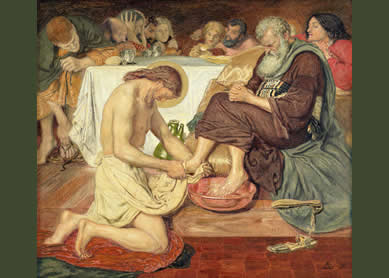Jesus was crucified as a Jewish victim of Roman violence. On this, all written authorities agree. A Gentile Roman governor, Pontius Pilate, condemned him to death and had him tortured and executed by Gentile Roman soldiers. Jesus was indeed one of thousands of Jews crucified by the Romans.
The New Testament testifies to this basic fact but also allows for Jewish involvement in two ways. First, a few high-ranking Jewish authorities who owed their position and power to the Romans conspired with the Gentile leaders to have Jesus put to death; they are said to have been jealous of Jesus and to have viewed him as a threat to the status quo. Second, an unruly mob of people in Jerusalem called out for Jesus to be crucified—the number of persons in this crowd is not given, nor is any motive supplied for their action (except to say that they had been “stirred up,” Mark 15:11).
Whatever the historical circumstances might have been, early Christian tradition clearly and increasingly placed blame for the death of Jesus on the Jews, decreasing the Romans’ culpability. In Matthew, the Roman governor washes his hands of Jesus’ blood while the Jews proclaim, “His blood be on us and on our children!” (Matt 27:25). John’s Gospel portrays Jews as wanting to kill Jesus throughout his ministry (John 5:18, John 7:1, John 8:37). Similar sentiments are found elsewhere, including writings by Paul, who, himself a Jew, had once persecuted Christians (1Thess 2:14-15, Phil 3:5-6).
The reasons for this shift in emphasis are unclear, but one obvious possibility is that, as the church spread out into the world, Romans rather than Jews became the primary targets of evangelism; thus there could have been some motivation to let Romans “off the hook” and blame the Jews for Jesus’ death. This tendency seems to have increased dramatically after the Roman war with the Jews in the late 60s.
In any case, by the middle of the second century, the apocryphal Gospel of Peter portrays the Romans as friends of Jesus, and the Jews as the ones who crucify him. Thus, a Jewish victim of Roman violence was transformed into a Christian victim of Jewish violence. For centuries, such notions fueled anti-Semitism, leading to a crass denunciation of Jews as “Christ-killers.”
Contrary to such projections, Christian theology has always maintained that the human agents responsible for Jesus’ death are irrelevant: he gave his life willingly as a sacrifice for sin (Mark 10:45; John 18:11). Christians regularly confess that it was their sins (not the misdeeds of either Romans or Jews) that brought Jesus to the cross (Rom 5:8-9; 1Tim 1:15). In most liturgical churches, when Matthew’s Passion Narrative is read in a worship service, all members of the congregation are invited to echo Matt 27:25 aloud, crying, “Let his blood be upon us and upon our children!”
Bibliography
- Fredricksen, Paula, and Adele Reinhartz, eds. Jesus, Judaism, and Christian Anti-Judaism: Reading the New Testament after the Holocaust. Louisville, Ky.: Westminster John Knox, 2002.
- Donaldson, Terence L. Jews and Anti-Judaism in the New Testament: Decision Points and Divergent Interpretations. Waco, Tex.: Baylor University Press, 2010.
- Crossan, John Dominic. Who Killed Jesus? Exposing the Roots of Anti-Semitism in the Gospel Story of the Death of Jesus. New York: Harper One, 1995.





